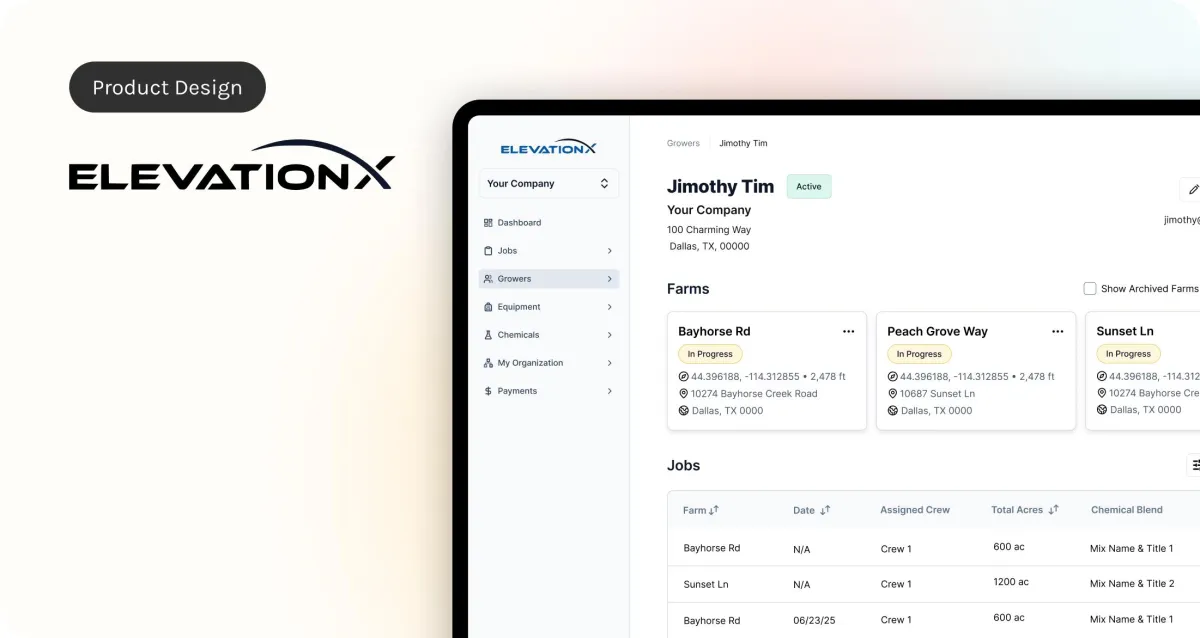
Turning Aerial Data Into Actionable Tools for Large-Scale Agriculture
Designing a Dashboard for Modern Farm Drone Operations
This project focused on designing a robust internal dashboard for commercial farm drone operators. These users needed a centralized, intuitive way to manage the complex logistics behind their daily work, from mapping fields and tracking chemical usage to managing employee assignments and flight paths.
Working closely with the lead developer, I designed and delivered the dashboard experience over the course of three months. The goal was to bring clarity and control to a fast-moving, highly specialized workflow.
Understanding the Workflow
Operating commercial drones for agriculture involves much more than flying. Operators are responsible for scanning and mapping large areas of farmland, applying treatments, and coordinating with teams in the field. Prior to this dashboard, much of this work was scattered across separate tools or managed manually.
We needed to design a system that could handle several layers of data, without overwhelming the user or slowing them down.
What We Built
The dashboard brought together the core functions that matter most to drone operators in the field:
Farm & Field Management
Users can create, track, and edit farm profiles, then break those down into specific field zones with detailed mapping.Flight & Application Logs
We integrated tools for recording drone flight paths and logging chemical applications by field and date, giving operators a clear record of activity.Team & Assignment Coordination
Operators can assign employees to flights or fields, track who is doing what, and view team activity in one place.Data-Backed Insights
While the core functionality focused on management, we also introduced space for future expansion, including potential data overlays, alerts, and analytics.

Building Fast, Together
With a tight three-month timeline, collaboration with the developer was essential. We worked side by side throughout the build, aligning on priorities and solving design challenges in real time. This allowed us to move quickly without sacrificing usability.
The design process included wireframing, component-based system building, and rapid iteration. Each feature was tested against real operator workflows to make sure the interface supported their needs on the ground.
What I Learned
Designing for commercial agriculture taught me that even complex systems can be intuitive when the interface is focused and well-structured. The biggest challenge was organizing a large volume of information in a way that remained easy to scan, quick to update, and reliable in the field.
Working closely with the developer also reinforced how powerful tight collaboration can be. Our shared decision-making helped keep the product grounded in function, without losing sight of usability or visual clarity.
This project was a reminder that strong tools don’t have to feel heavy. When designed well, they give power and control back to the people doing the work.
